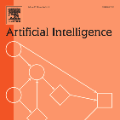Ensuring fairness in artificial intelligence (AI) is important to counteract bias and discrimination in far-reaching applications. Recent work has started to investigate how humans judge fairness and how to support machine learning (ML) experts in making their AI models fairer. Drawing inspiration from an Explainable AI (XAI) approach called \emph{explanatory debugging} used in interactive machine learning, our work explores designing interpretable and interactive human-in-the-loop interfaces that allow ordinary end-users without any technical or domain background to identify potential fairness issues and possibly fix them in the context of loan decisions. Through workshops with end-users, we co-designed and implemented a prototype system that allowed end-users to see why predictions were made, and then to change weights on features to "debug" fairness issues. We evaluated the use of this prototype system through an online study. To investigate the implications of diverse human values about fairness around the globe, we also explored how cultural dimensions might play a role in using this prototype. Our results contribute to the design of interfaces to allow end-users to be involved in judging and addressing AI fairness through a human-in-the-loop approach.
翻译:确保人工智能的公平性对于消除影响深远的应用程序中的偏见和歧视十分重要。最近的工作已经开始调查人类如何判断公平性,以及如何支持机器学习专家使其AI模型更加公平。从互动式机器学习中使用的可解释的AI(XAI)方法(称为emph{解释性调试)的启发中,我们的工作探索了设计可解释和互动的“流动中人”界面,使普通终端用户在没有任何技术或领域背景的情况下能够确定潜在的公平问题,并有可能在贷款决定中解决这些问题。我们通过与终端用户举办讲习班,共同设计和实施了一个原型系统,允许终端用户了解作出预测的原因,然后将特征的权重改变为“调低”公平问题。我们通过在线研究评估了这一原型系统的使用情况。为了调查各种人类价值观对全球公平性的影响,我们还探讨了文化层面如何在使用这一原型中发挥作用。我们的成果有助于设计界面,使终端用户能够通过“在人中”的方法参与判断和解决AI公平性。





